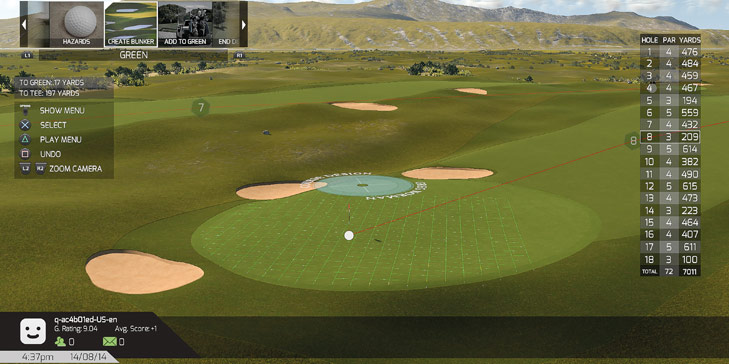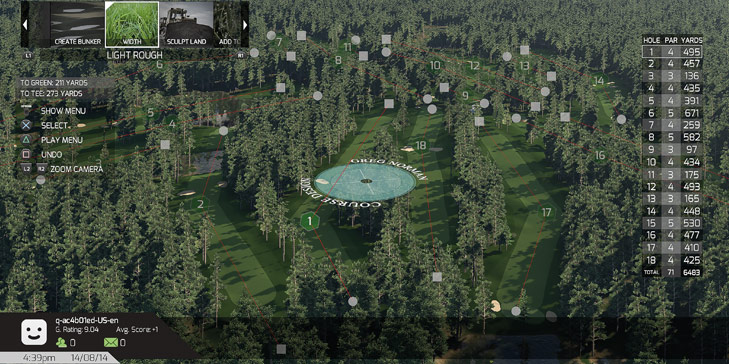Course creator application helping architects make virtual designs a reality
A newly-launched golf video game may transform the way real-life courses are designed and built. Canadian firm HB Studios launched The Golf Club on a range of platforms this summer, but as well as the main game, the product includes a course creator application that is being used by Greg Norman’s design firm as a tool in its day-to-day business.
HB’s team devised the concept of The Golf Club after the cancellation of Tiger Woods PGA Tour 15, on which it had been due to work – the firm has developed a number of games released under the EA Sports brand. “The course creator facility was a part of the plan from early development, but it has expanded considerably over time,” says HB chief operating officer Alan Bunker. “Originally, when we set out to build the course creator solely for the purposes of gaming, it was going to be a three click, random tool – you’d select the length, the number of holes and so on, and the application would generate a golf course. But over time, we added more tools and features, and it became much more powerful.”
It was at this point that HB was introduced to the team from Greg Norman Golf Course Design. “We said to ourselves ‘It would be great to be able to create your own courses’,” says Bunker. “We released some screen shots and a couple of press releases – and that’s when we started to get some interest from the real life course design firms. The Norman guys quickly got a handle on what we were doing, and realised they could use it in their own real-world course design work. I remember one of them saying to us ‘What you have here is the holy grail for golf course designers’.

What this holy grail comprises is the ability not only to see visualisations of golf holes and courses that currently only exist as CAD drawings – there are, after all, plenty of ways of creating visualisations – but also to play those holes, albeit virtually.
“Essentially it’s an interactive visualisation of an entire landscape,” says game producer Anthony Kyne. “For example, we just implemented a new feature that will allow GNGCD to import and export graphical data between their CAD system and our application. We can take their topographical data, generate the golf course, and the client can actually play the golf course using our game. It takes about two minutes to regenerate the golf course from that data. If there are holes they don’t like, it will be easier, quicker and cheaper for the architects to change them, because they can do so before any construction work starts.”
Norman himself says he hopes the tool will speed up the design process and save money for clients. “This new software tool will allow our design clients to play the golf holes on a computer while the project is still in the design phase and construction has yet to start which will provide a significant cost savings as well as a sales and marketing advantage to our clients,” he says.

Kyne, himself a golfer, though by his own admission, not a very good one, says he had always thought about creating a tool to replicate the courses he himself plays. “I wanted to make something that would represent the courses I play, and allow me to play them as a good golfer, not the bad one I am,” he laughs. “But a bunch of our development team – the maths and physics guys – had never actually seen a golf course before, so I took them out to a local course. Then they recreated that course using our tool.”
How does the tool work? Kyne explains that the game views topographical information in half metre squares, and can read the data from a designer’s CAD system into these squares, hence replicating graphically the contours created by the architect, and creating a virtualisation of the entire landscape of the golf course.
The tool and game could easily have applications beyond this, too. “We have a partnership with golf simulator firm Protee to do a version of the game for their equipment,” says Bunker. “And the Norman team see this as a long-term relationship. Already we are discussing opportunities for next year, for example around some of the tournaments and events that they run.”
This article first appeared in Golf Course Architecture Issue 38.